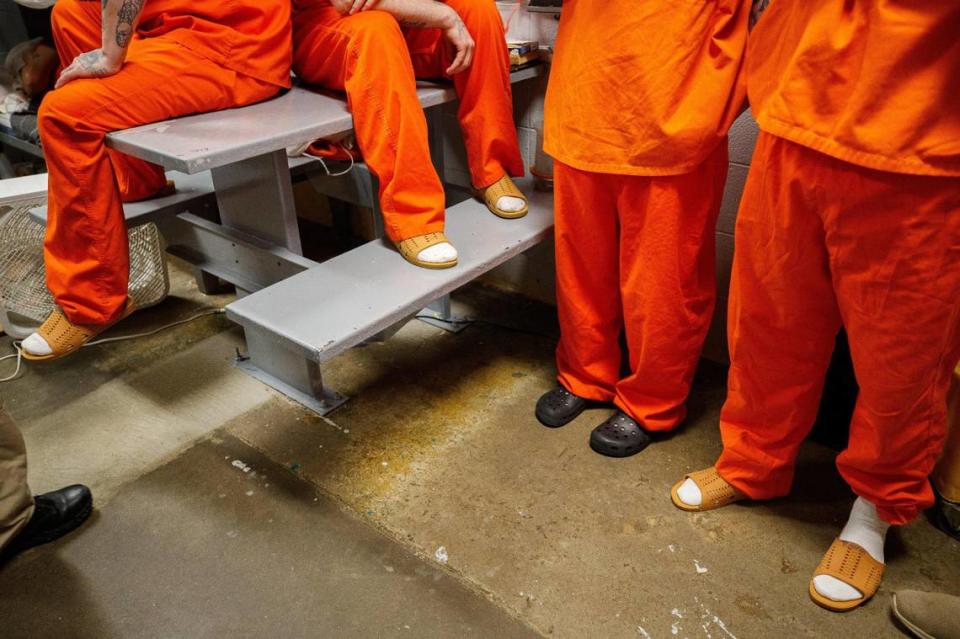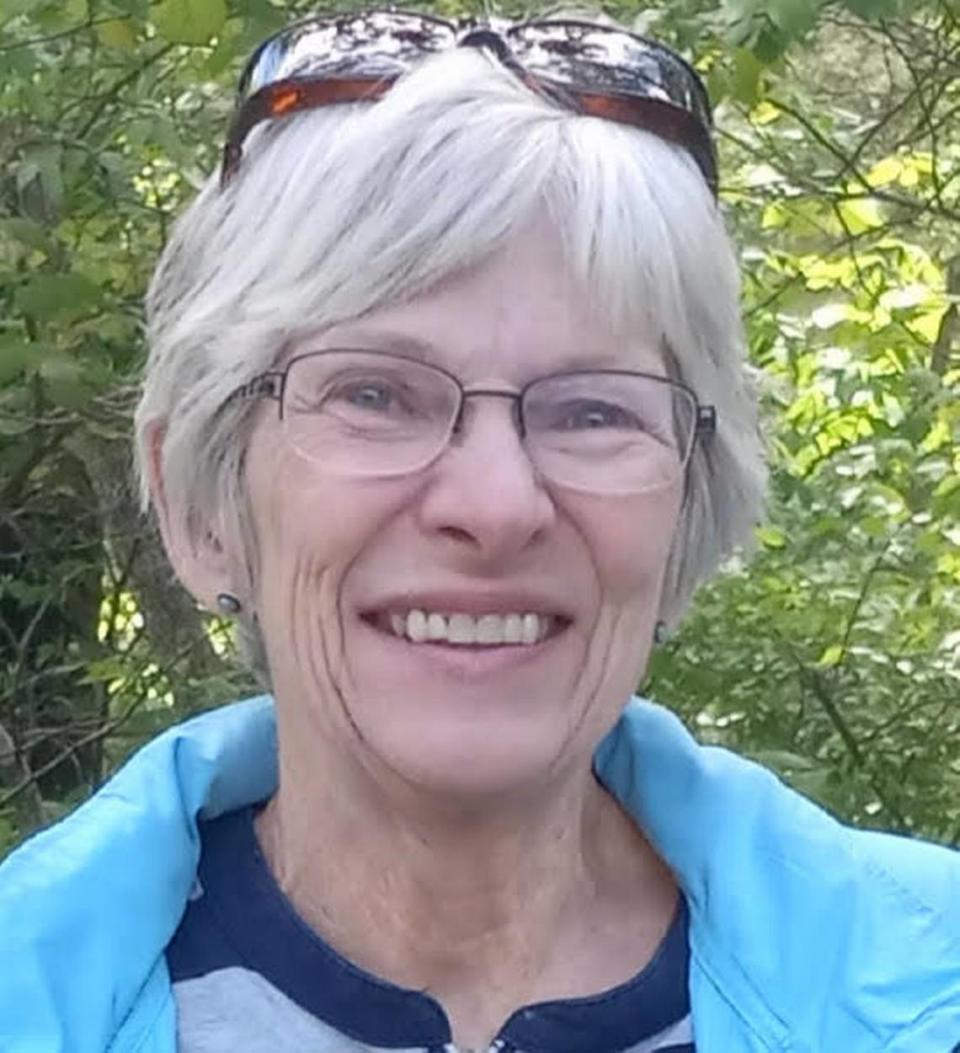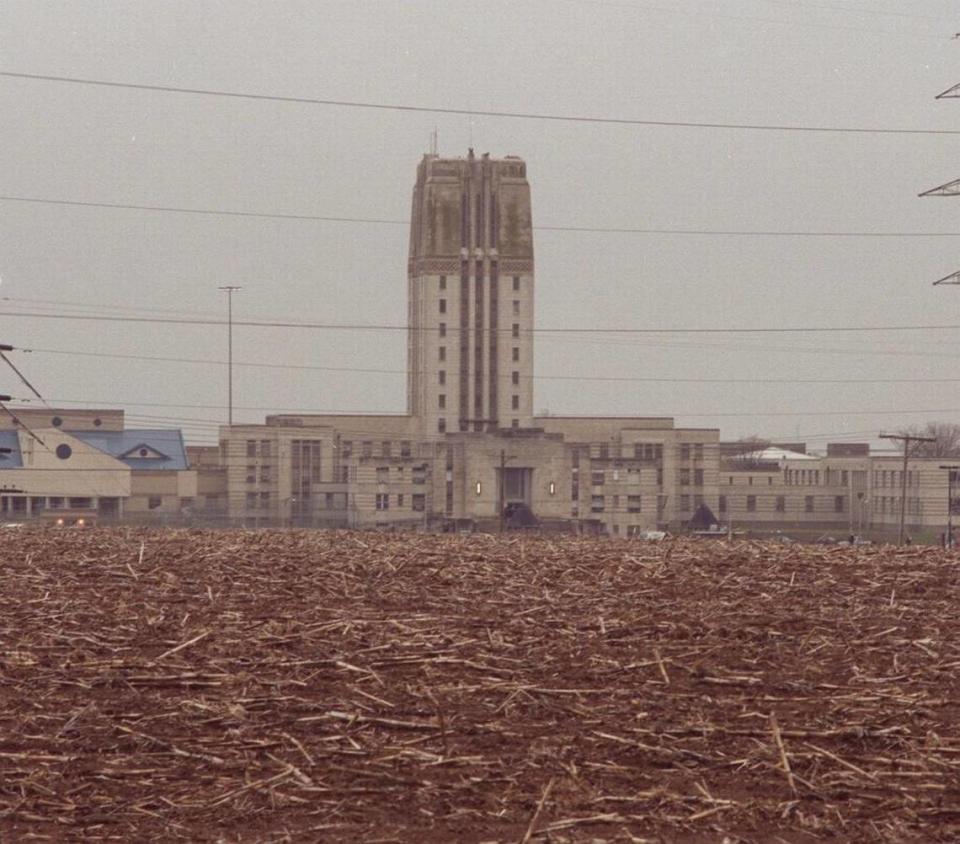How do we measure the consequences of the Safer Kentucky Act? In dollars, broken families | Opinion
Gaye Holman is the author of “Decades Behind Bars: A 20-Year Conversation with Men in America’s Prisons,” which was published in 2017. Beginning in 1994, Holman began recording the stories of 50 incarcerated men at Kentucky State Reformatory and Luther Luckett Correctional Complex in Oldham County. Twenty years later, 17 of them were still in prison when she reached back out to them. This is an interview between Holman and columnist Andrew Henderson, which has been edited for length and clarity. Holman reached out to Henderson after the publication of a column of his about the bill, expressing concerns she had about the Safer Kentucky Act.
The state of Kentucky’s prisons
Andrew: We are 30 years out after your initial 1994 study. From your perspective, how has the landscape of incarceration changed, or even stayed the same, in Kentucky over these last 30 years?
Gaye: I think it has disintegrated. The individuals that are in prison, there’s still a number of them still there that I keep in touch with, and there’s such a loss of human potential. Criminals generally age out of crime at age 40, and then they’re in their 60s, 70s, 80s [in prison] and are of no danger to anybody at all. I’d be glad to have many of them, not all, most living next door to me, and it’s just such a waste. But there’s many things within the prison that have changed and gotten worse than when I wrote about it.
Andrew: What are some of those areas you would identify as having gotten worse, or degraded, over this time frame?
Gaye: Well, of course, the crowding. They’re sleeping people in the open spaces that were supposed to be kind of for recreation and gathering…My area was education, and so I’ve been very interested watching that and I’m absolutely appalled. I was the coordinator of the college program, but the vocational program holds enormous hope for their future employment. The vocational part gave them a job when they got out, they are almost nonexistent.
Now what they’re spending a lot of money on, a lot of time, on what’s called life skills classes [anger management is an example]…but many of the men say that most of these are kind of useless. They take them because they get “good time” for them, or because it looks good to the parole board.
Andrew: We’re seeing more and more that state inmates are going to these county jails, which have typically not been built to support this increasing population and are becoming overcrowded, which you touched on earlier. What does it do in terms of psychological effects to people who are incarcerated to be crammed into these spaces?
Gaye: The jail situation is a money situation, the counties make money off of it, the state saves money because it’s cheaper to house an inmate in a county jail than it is to house them in their own institutions. So right now, they’re looking good, like they’re not overcrowded. But jails are just an impossible situation.
The men were always so glad to get out of the jails, and sent to prison. It was much better for them, because they’re sleeping on the floors, they’re crowded in, there’s absolutely nothing to do. There’s no treatment programs, it’s just sitting there being bored day after day after day, and that brings up so much anger, so much mental illness.

The Safer Kentucky Act, House Bill 5
Andrew: When you first reached out to me, you mentioned concern over the unintended consequences of House Bill 5, the Safer Kentucky Act. From your perspective as someone who’s worked with and corresponded with inmates, many of whom have had long sentences, what do you see as some of the unintended consequences?
Gaye: I think it goes two ways, and then it gets into a lot of rabbit holes. You have to consider first the human toll, and then the monetary toll. The one thing that has never been mentioned, so I’ll start with that, are the children that are involved. One out of every 10 children in Kentucky have had a parent incarcerated at some point. The ones that have had parents that are incarcerated, they are living in poverty, they have less good health, they will drop out of school more often, they are far more likely to be in prison themselves eventually…but no one ever mentions that. So when you incarcerate more and more and more, you’re breaking up more and more families.
Andrew: There was a part of your book which I highlighted that I think really speaks to that. This is from Ken, one of the inmates you corresponded with:
“As for my children, they are the ones who suffer the most, in my opinion. They have to live for the next thirteen and a half years without a father being there whenever they need me…Those effects (of being incarcerated) could possibly change the course of people in a negative way, and I am the one responsible for that. That is the one thing I can never forgive myself for–all the unintended consequences of my criminal activity”
Gaye: That’s a perfect example of it. For a while, at our church, we had a book project and we took children’s books into Luther Luckett. We helped the men choose appropriate books for their children and they read them on tape, and then we sent the tape and the books to the children. We did it for about 10 years and it was so touching; we’d go back while they’re reading and tears would just be streaming down their cheeks, or they would have finished reading the book and they would just be sitting there crying because they know the things they’ve done and how the children were affected.

Andrew: You also brought up the cost associated with this, because it’s costly to incarcerate people, and not only that but to incarcerate them for longer. There was an analysis I saw from the Kentucky Center for Economic Policy that said House Bill 5 would cost the state over $1 billion over the next 10 years.
Gaye: If I’m reading that right, I’ve read that article they wrote, it looks to me like they’ve only estimated the cost of increasing the crime limits, you know, like something becomes a felony or a felony becomes higher than that…Three strikes and you’re out, that one drives me insane, I don’t think they looked at that; you could add another billion or so on there if you just look at what’s that going to cost everybody. And we need to talk about health care, that’s another biggie. They said a billion dollars over 10 years, I think that is minuscule compared to what it’s really going to be.

Andrew: A pretty major provision of the Safer Kentucky Act would expand the state’s violent offender statute to include a number of other crimes and also require people convicted of those crimes to serve at least 85% of their sentences. What does that do to a prison population?
Gaye: Well you put a 20-year-old in and tell him that he’s going to do 50 years, or whatever, I don’t know, I may be exaggerating, but where’s the motivation? The motivation when I was there was this “good time.” They took classes, they got good time…I think they got a day for every day they behaved, you know it was that sort of thing, and it really cut the sentence down significantly. But if they got a write up, and were found guilty on it, then, you know, they lost that good time. That was quite a motivation.
Andrew: There’s a portion in your book where you write about how there’s no one size fits all mold of a prison inmate, other than perhaps that they are in prison and they have been convicted of a crime. They’re all very different, they all have very different circumstances. If there was one thing you would want people to know about the lives of these men that you know, or people in general who have been incarcerated, what is it that you would want them to know?
Gaye: These are individuals that each have their own story. The majority of them were mistreated as children…it’s hair raising what they’ve been through, but even taking that away, they’re still human beings just like we are with the same feelings, same emotions that we have. Can’t we try to understand that rather than just trying to get rid of them? Because they have so much potential; oh, my God, some of them are just so bright.
Some of them, at the end of the book, are out, they’re really good, contributing citizens; they’ve had to work really hard to get good jobs, but they worked their way up. We’re wasting so much human potential.

